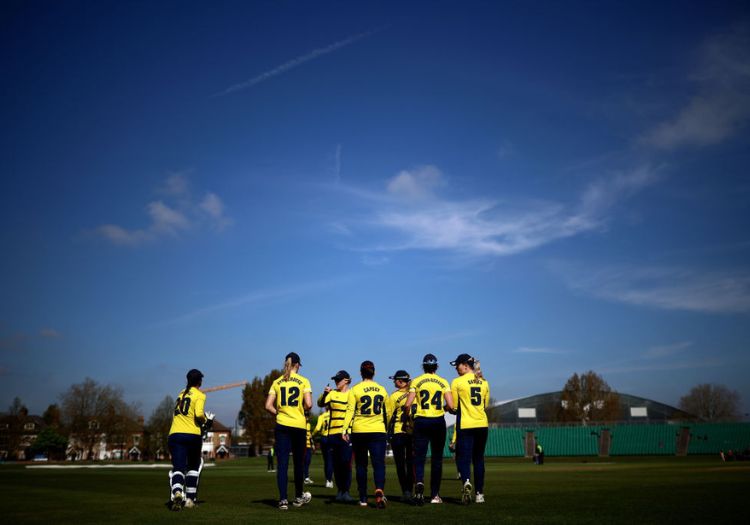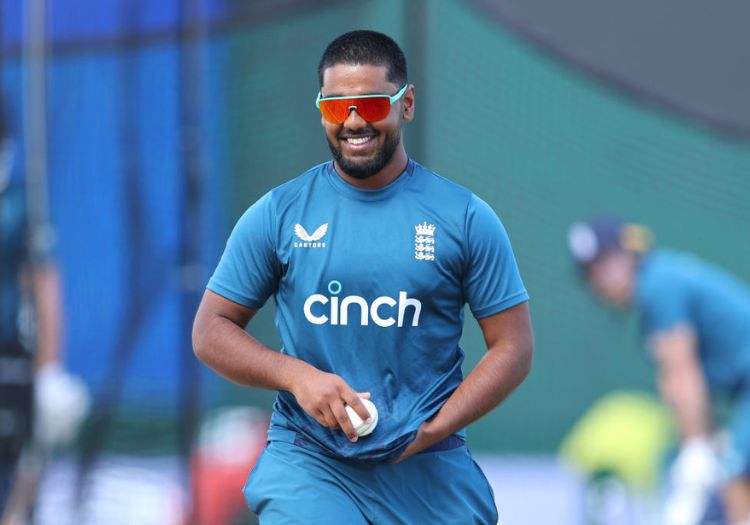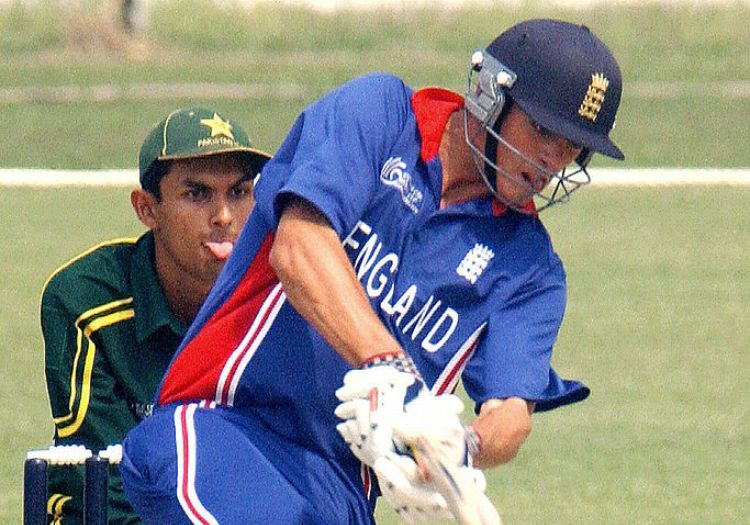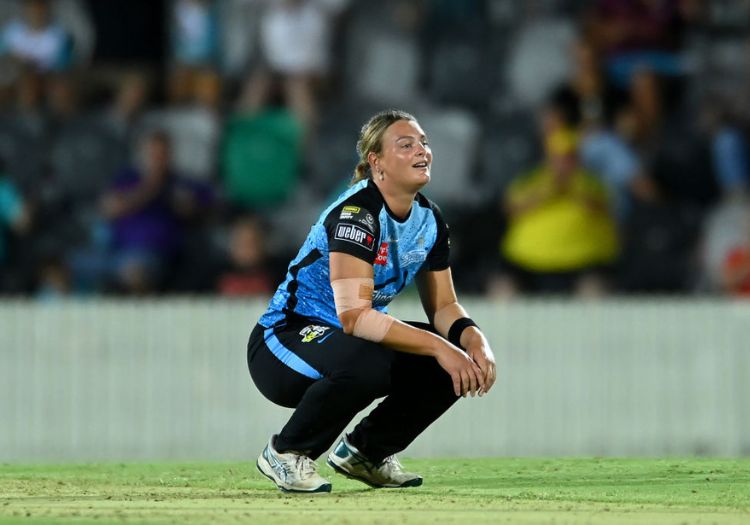Project Darwin will continue to funnel funding towards the top of the game but a hybrid approach is required to future-proof the system and ensure a regular flow of talent trickles through the system

From childhood proteges to quiet beginners, young introverts to confident performers - you can never be exactly sure what the building blocks towards future success look like. For every pupil who excels at languages but who is unable to find their niche, there is the unacademic child who excels in high office. Whether it be being discovered or mentored by the right person; or, quite often, taking longer to find out what they're good at; there is no prescribed route to a prosperous career.
Can the same principles be applied in sport, particularly cricket? In short, is being the best at age 19 a good indicator of what may follow?
Fortunately, we have some very good data to examine this hypothesis.
Every two years, the ECB sends a squad to the Men's Under-19 World Cup comprising the 12-15 best cricketers in the country. In the 11 tournaments between 1998 and 2018, a total of 160 players were selected.
Meanwhile, since 2002, 153 players have made their senior debut in at least one format (some of whom had already debuted in another format).

Rehan Ahmed has made a splash sine returning from the Under-19 World Cup (Ashley Allen/Getty Images)
If superior performance at the end of your teenage years is a reliable indicator of future success, then logically the vast majority of those senior caps should have gone to former Under-19 players. But what happened in reality?
Ultimately, 114 of those 160 Under-19 players haven't gone on to win a single senior international cap, most overtaken by others not selected at the same stage in their development (plus a few who played junior cricket overseas).
Forty-six former Under-19 players earned at least one cap in one format. However, the vast majority of senior debuts in each format since 2002 were by players who weren't selected.
TestsDebutants since 2002: 102Under-19s-pathway: 33Percentage: 32 per centTotals caps awarded to debutants since 2002: 2,554Under-19s-pathway: 1,021Percentage: 40 per centODIsDebutants since 2002: 106Under-19s-pathway: 39Percentage:37 per centTotals caps awarded to debutants since 2002: 4,042Under-19s-pathway: 2,554Percentage: 63 per centT20IsDebutants since 2002: 101Under-19s-pathway: 33Percentage: 33 per centTotals caps awarded to debutants since 2002: 1,943Under-19s-pathway: 708Percentage: 36 per cent
Of course, some of these former Under-19 players turned out to be very good players at senior level (Alastair Cook, Ben Stokes, Joe Root, Moeen Ali, Jos Buttler, Ravi Bopara, Chris Woakes), but conversely, some did not. (The 10 most-capped former Under-19 players account for at least two-thirds of all caps awarded to that group).
Similarly, whilst it's admittedly only a snapshot, being the leading run-scorer or wicket-taker in a World Cup is no guarantee of future international success.
England at Men's Under-19 World Cups 1998-2016Most runs: Stephen Peters (1998), Gary Pratt (2000), Nicky Peng (2002), Alastair Cook (2004), Rory Hamilton-Brown (2006), James Taylor (2008), James Vince (2010), Ben Foakes (2012), Ben Duckett (2014), Jack Burnam (2016)Most wickets: Graham Napier (1998), Tim Murtagh (2000), Tim Bresnan (2002), Tim Bresnan (2004), Steven Mullaney (2006), James Harris (2008), Nathan Buck (2010), Reece Topley (2012), Matt Fisher (2014), Saqib Mahmood (2016)
While not every player selected has gone on to achieve full international honours, fortunately, the men's game has the structure and support in place to identify and nurture late developers and latent talent.
But what has this got to do with the women's game? The starting point is that there's no data-based argument as to why development rates shouldn't broadly mirror those seen in the men's game if the same support and structure existed to support late developers and undiscovered talent.
Unfortunately, the ECB has under-funded the county structure meaning that no equivalent support or structure exists.

Alastair Cook in action during the 2004 Under-19 World Cup (FARJANA K. GODHULY/AFP via Getty Images)
Consequently, even though many thousands more young women are playing cricket than 10 years ago, if a player hasn't picked up a contract before they need to start earning a living, then their chances of a professional career are effectively ended.
For all such players, their only subsequent option is to play for a county – with limited coaching, limited personalised training and limited match opportunities. How could any such player, however talented, hard-working or resilient, possibly seek to compete against and usurp an equally (or perhaps 'less') gifted full-time professional who has access to comprehensive support/coaching and plays many times more quality matches?
All the focus, all the attention and the vast majority of funding is (and will continue under Project Darwin to be) directed towards a small professional cohort composed, with the exception of some older pre-RDC players, entirely of those who were the best players at age 19-20.
And, unlike their male counterparts, members of this group will remain 'the best' (until displaced by an Under-19 protégé) because any possible competition from players who, with appropriate support and competitive matches, might have overtaken them has been eliminated.
Supporters of the current arrangements will point to the improvement in domestic standards in the years since the regional development centres were launched, but 'being better than we used to be' is not the same as 'being as good as we could be'. No player reaching 300 runs or more than 10 wickets in the last edition of the Women's Big Bash League speaks to a system which could still be performing better.
Why is this of little surprise?
- The English women's game is effectively discarding over two-thirds of young players who could - with proper support akin to the men's game - go on to become the best senior talent.
- Domestic standards and national performances are capped by drawing from a pool comprising the players who were deemed the best at age 19.

Danielle Gibson was among England's representatives at the WBBL (Albert Perez/Getty Images)
- Increased salaries and rewards are to be welcomed, but in the majority of cases are going to players who wouldn't be playing at this level but for the lack of competition.
The ECB could be accused of choosing to prioritise headlines and parity with the men's game over alternative actions which would deliver far broader benefits immediately in terms of diversity, geographic engagement and total playing numbers, alongside significant improvements in the medium term (domestic standards, depth of talent pool and, eventually, national performance).
Six-point action plan:
- Focus the majority of additional funding and resources on the county structure beneath the professional level to ensure that a credible pathway exists for late developers. Those counties which are not currently regional centres (or, in the future, tier one counties) need enough funding to deliver on a remit to identify, nurture and support local talent and ensure that talented individuals stay in the game.
- Each (future) tier one county should be obliged to provide support and resources to adjacent tier 2 counties (including EPPs, S&C programmes, and coaching).
- A small number of tier two counties should be funded to provide out-of-season training and support to the best amateurs in their region.
- The ECB should establish and properly support 'tier two' county T20 and 50 over competitions which run across the whole season, culminating in regional and national finals. And tier one counties should run separate amateur teams which compete in these competitions.

Southern Vipers once again dominated the regional game in 2023 (Tony Marshall/Getty Images)
- Instead of 10 full-time contracts, tier one counties should offer a mix of contracts – maybe five-six full-time contracts to proven performers and eight-12 part-time contracts (allowing people to blend cricket careers with other work).
- Sufficient tier one games should be played at weekends to allow part-time professionals to play and amateur tier two players to be given trials without having to use up holiday.
Note that this proposal is entirely consistent with Project Darwin's plans for eight top counties. However, the make-up of the tier one counties' squads would gradually evolve to include far more older players who've earned their contracts through performances in the 'tier two' competitions, more semi-professionals and fewer RDC direct entrants.
It would mean slower progression towards higher pay and reward for the elite players but the result will be far higher standards which will make the game more attractive for spectators, sponsors and advertisers, which in turn would facilitate sustainable and organic levels of higher pay and reward.
It might look like an unfashionable strategy, one lacking in headline figures, but it is about building a structure around the sport to future-proof the flow of talent.